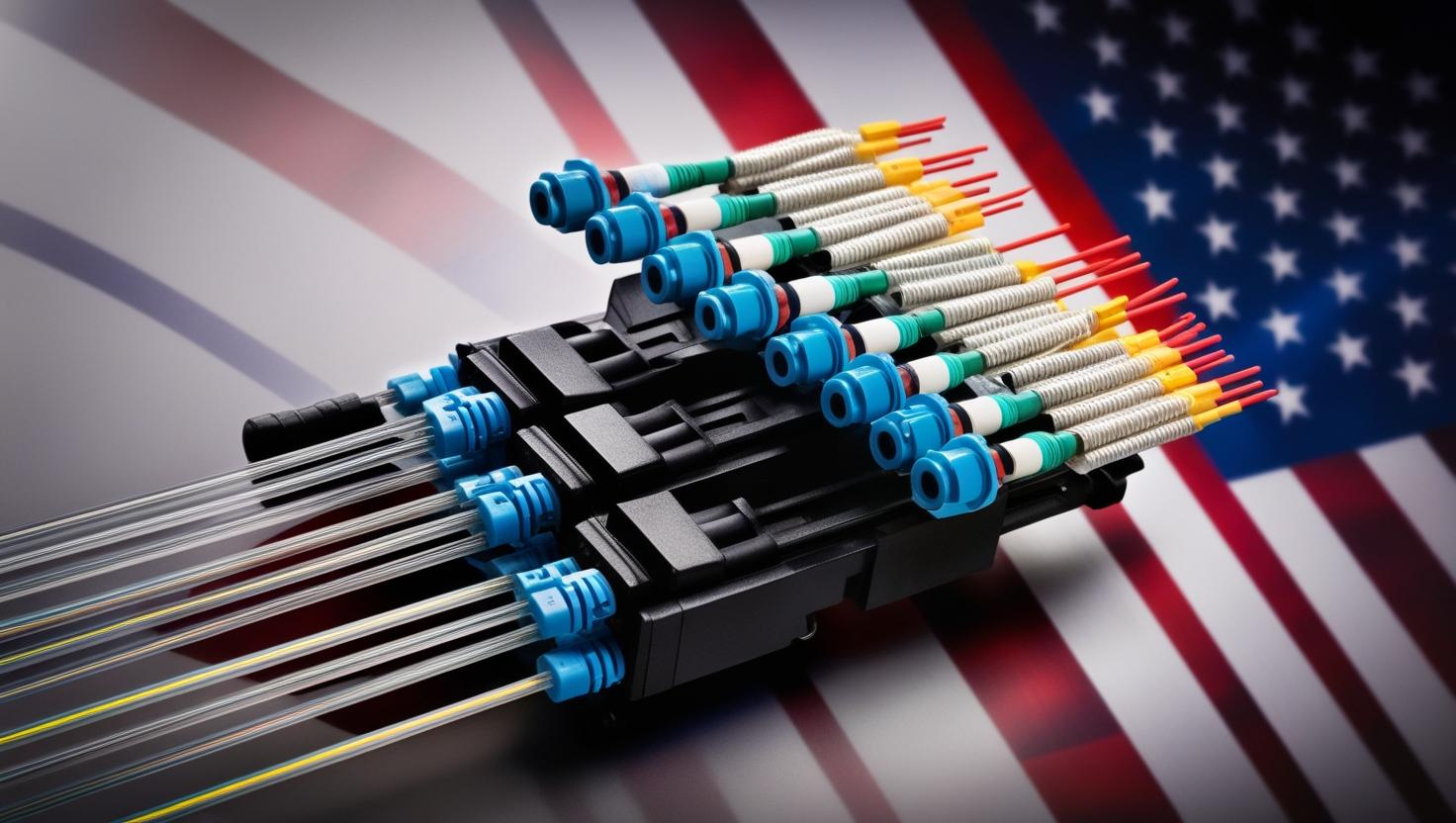The imposition of U.S. tariffs on Chinese-made fiber optic components sent ripples through the global telecommunications industry. What initially seemed like a major disruption has since evolved into a catalyst for transformation. The fiber optic industry, at the heart of high-speed connectivity and digital infrastructure, is now experiencing a wave of innovation fueled by resilience and strategic repositioning.
Tariff Shock: The Disruption Phase
When the U.S. enacted tariffs on Chinese telecom and fiber optic components as part of broader trade policies, industry players faced a steep rise in import costs—sometimes by as much as 25%. This disrupted long-standing supply chains and forced manufacturers and telecom operators to reassess their sourcing, pricing, and operational strategies.
The fiber optic sector, heavily reliant on China for components like transceivers, connectors, cables, and optical amplifiers, initially struggled with:
- Cost escalations
- Supply delays
- Contract renegotiations and project stalls
But out of this disruption emerged an imperative to adapt, rethink, and innovate.
Request US Tariff Impact Analysis Now @ https://www.marketsandmarkets.com/forms/ctaTariffImpact.asp?id=63775446
Turning Point: Strategic Shifts and Innovation
The industry’s response to tariffs marked a strategic turning point—with innovation taking center stage. Key shifts included:
- Localization and Reshoring Initiatives
U.S.-based manufacturers accelerated investments in domestic production facilities to reduce exposure to overseas tariffs. These efforts were further supported by federal incentives aimed at rebuilding tech manufacturing capacity on American soil.
- Diversification of Supply Chains
To break dependency on Chinese imports, companies expanded sourcing to Vietnam, India, Taiwan, and Mexico, leveraging emerging manufacturing ecosystems and building more agile, multi-vendor supply chains.
- Next-Gen Product Development
The financial pressure of tariffs prompted companies to double down on R&D for cost-effective and efficient components. Innovations in silicon photonics, integrated optics, and energy-efficient transceivers gained momentum, helping firms future-proof their offerings.
- Smarter Procurement and Automation
Digital supply chain tools, AI-driven forecasting, and automation began playing a more central role. These technologies helped reduce costs, optimize inventory, and improve responsiveness in volatile trade environments.
New Growth Opportunities
Rather than stalling, the fiber optic industry has found new avenues for growth:
- 5G and edge computing deployments are fueling demand for faster and more reliable fiber infrastructure.
- Smart cities and IoT ecosystems require robust fiber backbones—creating a steady stream of projects globally.
- Government-backed broadband initiatives are investing billions to bridge the digital divide, giving local manufacturers and solution providers a chance to expand their footprint.
Looking Ahead: A More Resilient Industry
While U.S. tariffs initially disrupted the fiber optic ecosystem, they inadvertently set the stage for greater resilience, technological advancement, and regional diversification. Companies that embraced innovation have emerged stronger, leaner, and more agile.
The road ahead for the fiber optic industry is not without challenges—geopolitical uncertainty, regulatory shifts, and global competition remain. However, its transformation from disruption to innovation is a testament to the sector’s adaptability and importance in shaping the future of global connectivity.

